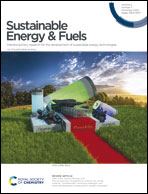Visible light-driven selective carbon–carbon bond formation for the production of vicinal diols†
Abstract
A photocatalytic and sustainable production of vicinal diols from benzylic alcohols through the selective formation of a carbon–carbon bond is developed under visible light irradiation. Typically, a 92.2% conversion of benzyl alcohol with a 92.9% selectivity of hydrobenzoin is achieved using a heterogeneous modified ZnIn2S4 catalyst at room temperature. This smart catalyst can extend the life of the benzyl alcohol radical to more than 24 ns and avoid the generation of benzaldehyde in the reaction system due to its excellent ability of separating photogenerated carrier and inhibiting the recombination of electron–hole pairs.



 Please wait while we load your content...
Please wait while we load your content...